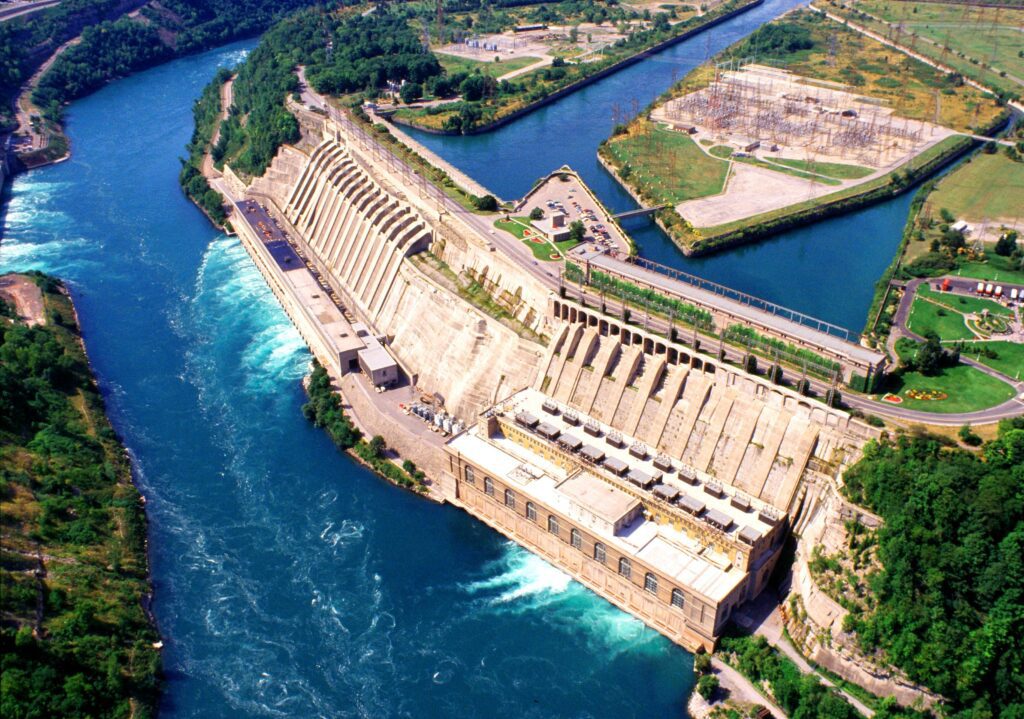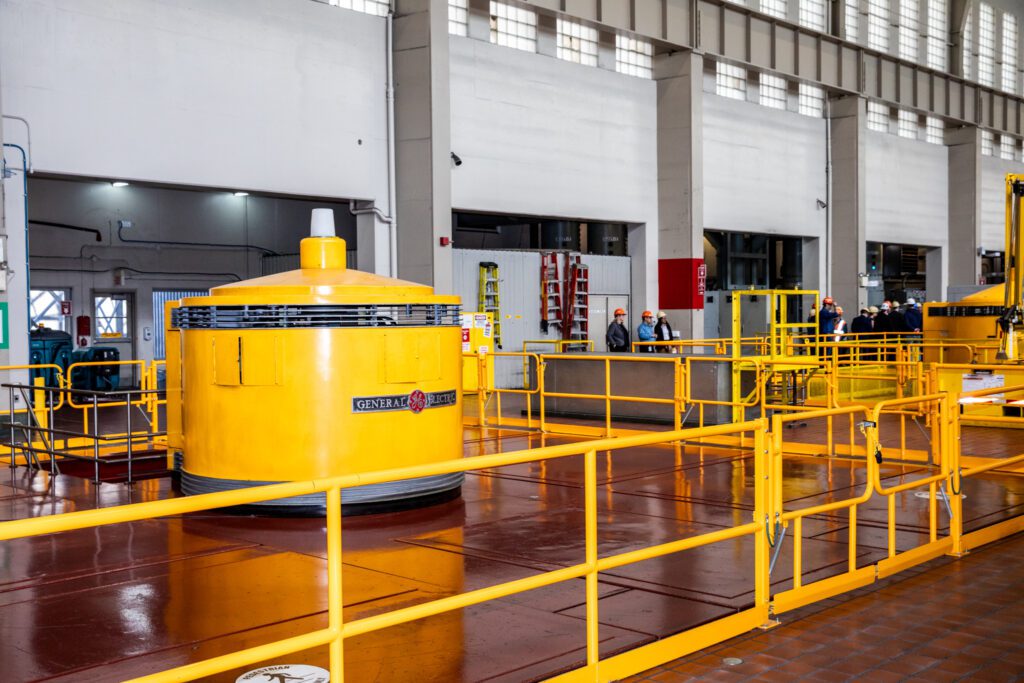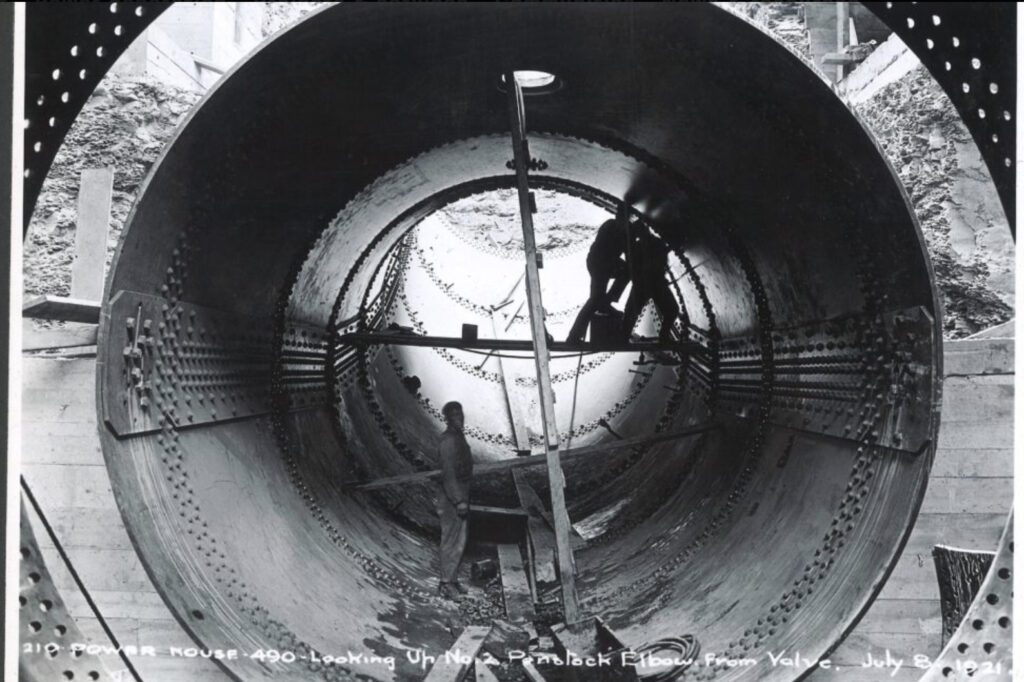OPG Embarks on Major Refurbishment of Niagara Falls Hydropower Stations
Ontario Power Generation (OPG) will partner with GE Vernova to complete a 15-year project to refurbish the iconic 1.7-GW Sir Adam Beck I and II hydroelectric complex near Niagara Falls.
The C$1 billion ($724 million) project unveiled on April 16 will comprise the first phase of OPG’s larger plans to overhaul all five of its hydroelectric assets in Southern Ontario, including the 167-MW DeCew I and II complex and the 174-MW Sir Adam Beck Pump Generating Station.
“Over the coming years, up to five Niagara hydro stations are set to be refurbished, securing about 1,700 MW of clean power for another 30-plus years—enough to power about 1.7 million homes,” the utility noted on Tuesday.
The overhaul will mark a historic milestone for OPG’s Southern Ontario hydropower fleet, one of the oldest in the world:
- Sir Adam Beck 1, located near Niagara Falls, has been operational since 1921 and includes 10 units contributing 446 MW.
- Sir Adam Beck II is the largest facility, featuring 16 units (a combined 1,499 MW) that have been operational since 1954.
- The 23-MW DeCew I Generating Station near St. Catharines is the oldest of the fleet, brought online in 1898.
- DeCew II, which began operating in 1943, features two units with a capacity of 144 MW.
- Sir Adam Beck Pump Generating Station has been operating since 1957 near Niagara Falls, featuring six units with a total capacity of 174 MW.

A $1B, 15-Year Project—To Expand Capacity by 50 MW
The C$1 billion project with GE Vernova is slated to begin in 2025. Over 15 years, GE Vernova will refurbish 26 units at Sir Adam Beck I and II, and the Beck Pump generating station, increasing the complex’s capacity by up to 50 MW. OPG is still currently developing future plans for the DeCew I and DeCew II generating stations, Ontario’s government noted on Tuesday.
“The refurbishment work includes replacing and modernizing existing turbines and improving existing generating capacity. With proper maintenance and upkeep, these generating assets can produce clean, low-cost power for generations,” OPG told POWER. “The new units will make better use of the water and will incrementally add about 50 MW to the capacity of the Beck complex.”
OPG added the “investment is less about expanding capacity at the facility; rather it is about investing in assets that will ensure the station runs for many more decades.” Beck I is now more than 100 years old, while Beck II “has been producing clean, low-cost power for nearly 70 years,” it noted.
OPG has taken several steps to modernize its hydropower fleet in Ontario, which it notes are “dependable and time-tested.” Over the past few years, it has executed several upgrades and unit overhauls, including the redevelopment of its Calabogie station on the Madawaska River.
In November 2022, OPG notably completed a full-unit replacement at Sir Adam Beck I to add 125 MW of incremental capacity to the station—the first in its 103-year history. When Beck I came online in 1921, it operated on a now discontinued 25-Hz distribution system, providing power to steel mills in Hamilton and upstate New York, OPG explained. Work entailed replacing Beck I’s original 40-MW G1 and G2 units—its last remaining legacy units—to bring them to the modern 60 Hz standard.
Compared to the new refurbishment project announced on Tuesday, “The work we did on G1 and G2 inside Beck I is much different,” an OPG spokesperson said. “Those original units (100 years old) had been laid up for many years, and we replaced them with modern generators. All the other Beck units have been refurbished or replaced over the years. These two original units had never been replaced.”
The 2022 project required a full replacement of the original cast steel scroll cases—“spiral-shaped tubes that funnel water into the turbine”—with new scroll cases fabricated with fine precision. “As testament to the station’s original design and durability, the project was able to reuse the existing 100-year-old penstocks and draft tubes, with minor repairs,” the utility noted.

An Iconic Legacy: Sir Adam Beck Generating StationThe Niagara Falls area, celebrated for the falls’ magnificent spectacle and raw power, has hosted numerous small hydro projects starting in 1893. “But it wasn’t until the Province of Ontario authorized construction on Sir Adam Beck I—the first major publicly owned generating station in Ontario—that the power of the Niagara River could be harnessed to provide truly affordable power for the entire province,” Ontario Power Generation (OPG) notes. “At the time it was built by Ontario Hydro, OPG’s predecessor, the 18-story-high facility was the largest hydroelectric generating station in the world.” Built by 10,000 workers and completed in 1917, the 10-unit, 446-MW station was an engineering marvel of its time. It effectively utilizes the water from the Niagara and Welland rivers, channeling it through canals and diversion tunnels well above the falls, before releasing it into the lower Niagara River. In 1950, the plant was renamed to honor Sir Adam Beck, the founder of Ontario Hydro, on the 25th anniversary of his death, recognizing his vision and dedication to public power. “Sir Adam Beck I was the station that put Ontario and Canada on the map in terms of large hydroelectric generation,” noted Nicolle Butcher, senior vice president of Renewable Generation and Power Marketing at OPG, in 2021. “Just as it did when it went into service, the station continues to produce affordable, clean power for the entire province. And with our continuing investment into the station, this facility will reliably serve Ontario for decades to come, playing a vital role in achieving our net-zero emission goals.”
Today, the Niagara Falls region retains its legacy as one of the world’s greatest sources of hydropower. Alongside the Sir Adam Beck complex in Canada, the American side features the 2.7-GW Niagara Power Project, which is operated by the New York Power Authority. That project, opened in 1961, comprises 25 turbines from the Robert Moses Niagara Power Plant and the Lewiston Pump Generating Plant. New York State in 2021 completed a modernization and life extension effort at the Lewiston plant and the digitalization of the first of 13 hydropower turbines at the Robert Moses plant. |
Needed to Meet Ontario’s Coming Demand Surge
On Tuesday, OPG leadership lauded the hydropower overhaul as a key priority to support the utility’s future prospects.
“Upgrading and optimizing OPG’s renewable generation workhorses like the Sir Adam Beck complex is crucial to support the growing demands of electrification and a thriving economy,” said OPG President and CEO Ken Hartwick. “Through this refurbishment, this hydropower facility will build on its century-plus history, and continue to produce the low-cost, reliable electricity Ontarians need for decades to come.”
Currently, the Sir Adam Beck complex produces about 12,300 GWh of energy each year—about 35% of OPG’s hydroelectric production, or about 9% of Ontario’s produced power, the Ontario government noted.
However, recent analyses by Ontario’s grid operator, the Independent Electricity System Operator (IESO), forecasts demand in the province will grow at an average annual rate of 1.9%, fueled by population growth, electric vehicle adoption, and industrial sector growth that electrifying or supporting electrification. The IESO’s December 2022–released Pathways to Decarbonization (P2D), meanwhile, suggests that Ontario’s power system capacity requirement could more than double from 42 GW today to 88 GW by 2050. “This means that Ontario may be required to build upwards of 69,000 MW of new generation by 2050 to ensure that a reliable and operable electricity system is maintained,” IESO stressed.
Including its Niagara plants, OPG owns a 7.6-GW hydropower fleet comprising 66 stations and 240 dams on 24 river systems in Ontario. (In addition, through its Eagle Creek wholly-owned subsidiary, it owns 85 hydro stations (a combined 691 MW) across the U.S.). Today, OPG’s Ontario hydropower fleet makes up a substantial share of its overall 18.2 GW generation portfolio. That fleet includes two nuclear stations (Darlington and Pickering), a biomass station, a dual-fueled oil and gas station, and four combined-cycle gas plants. Additionally, OPG owns two other nuclear-generating stations in Ontario, which are leased long-term to Bruce Power.
To meet future demand from electrification and economic growth, OPG in 2022 formally set out to build its first small modular reactor (SMR) deployment—a GE Hitachi BWRX-300 reactor—at its Darlington New Nuclear Project (DNNP) site east of Darlington Station in Bowmanville, Ontario, and in July 2023 it said it planned to build three other SMRs. The first SMR is slated to be ready for commercial operation in 2029, and the others could be built by 2036.
And in concert with its historic overhaul of the Niagara plants, the company in January moved to refurbish four units at the Pickering Nuclear Generating Station, Canada’s first major commercial generation plant—marking a major turnaround for the 3.1-GW plant slated to close by 2025. All units at Ontario’s other two nuclear facilities—Darlington and Bruce Nuclear generating stations—have completed refurbishment or are scheduled to complete them between 2026 and 2033.
So far, OPG’s Niagara plants have played a crucial role in delivering reliable electricity while the province fields nuclear outages and refurbishments at Darlington and Bruce Power. OPG on Wednesday told POWER it does not expect the Becks refurbishment to strain its system. “We are refurbishing one unit at a time and the system can accommodate the unit being out of service for the work. It takes about one year to refurbish a unit, so there will always be one Beck unit off-line for the next 15 years or so,” it noted.
Looking ahead, the Niagara region could play an even larger role as a hotbed for integrated energy systems. In 2022, Atura, an OPG subsidiary that operates the utility’s four combined-cycle plants, selected the Niagara region as Ontario’s first large-scale site for the production of clean hydrogen. The Niagara Hydrogen Center, which is expected to be operational in 2025, will use power from the Sir Adam Beck stations and a 20-MW electrolyzer to produce hydrogen. The provincial government is slated to support the project by providing an exemption from the Gross Revenue Charge from 2024 to 2033 for Beck’s generated power used specifically for hydrogen production.
Partnership Fuels Momentum for Major Infrastructure Projects
For GE Vernova, which is now an independent company focused on accelerating the energy transition, the agreement announced on Tuesday with OPG marks another milestone for a long-standing partnership.
“Looking at the future, it confirms a new dynamic in the hydropower industry marked by closer and longer-term collaboration to secure the supply chain and increase the productivity of the projects,” said Frederic Ribieras, CEO of GE Vernova’s Hydro Power business. “The modernization of these power plants is expected to extend the life of the assets for over 30 years and increase the generation of sustainable, reliable, and affordable electricity.”
Romain Pellegrino, general manager for North America at GE Vernova’s Hydro Power business, in a corporate article, underscored that point. “While the world is expected to need to double hydropower capacity to stay on course for its net zero goals, [North America] would need to grow hydropower by a factor of five compared with the previous decade,” he noted.
Staying on course will require governments to work collaboratively to boost investment, boost investment, streamline licensing, and introduce sustainable practice regulations to meet these goals. Clarity will provide equipment manufacturers with the necessary visibility to scale up capabilities and allow project developers to secure access to limited resources as competition for supply ramps up, GE Vernova suggested. “The close, long-term collaboration between GE Vernova and OPG helped slash the standard procurement phase for the Niagara assets by more than 12 months, while still ensuring that environmental concerns are properly addressed,” the article notes.
“That gives us more time to spend optimizing the project,” Pellegrino said. “We’ve established the contractual landscape for procurements, so we can progress straight to the conceptual design and engineering phases.”
—Sonal Patel is a POWER senior editor (@sonalcpatel, @POWERmagazine).
